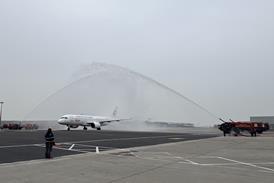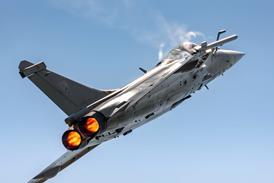Approved GPS approach procedures at several UK provincial airports are likely to go live for general aviation aircraft by July this year, according to the UK's Civil Aviation Authority. Simultaneously the CAA has announced it is to exempt non-public transport GA operations from requirements for the carriage of emergency locator transmitters (ELT) and approved lifejackets and life-rafts, permitting the use of cheaper and more practical alternatives.
These are among the first positive measures to emerge since the publication last year of a CAA/Department for Transport strategic review of the state of the UK GA industry and the regulations that apply to it.
|
Need for effective dialogue The factor that appears to have transformed the UK government's attitude to general aviation is that it was made aware the sector's economic contribution stands at £1.4 billion ($2.8 billion), it employs about 11,000 skilled people and it creates skills. The review also concludes that "there is a need for a more effective dialogue going forward between GA, CAA and government and all parties need to work better together to influence legislative changes emanating from Europe". The report notes that "GA needs to co-ordinate and present itself better", which was self-evident from the level of government ignorance of its economic contribution. The regulatory review concluded that over-regulation was a problem. |
|---|
The CAA says it is about to issue a letter of intent to permit GPS non-precision approaches for GA aircraft at UK licensed airfields with an instrument runway. Having designed GPS non-precision approaches at Blackpool, Durham Tees Valley, Exeter, Gloucester Staverton, Inverness and Shoreham airports, the CAA has received 170 reports from GA pilots that provided "encouraging data", according to Ron Elder, head of the CAA's Safety Regulation Group Licensing Standards Division.
He adds: "As a result of the positive feedback we have taken the decision to move ahead with the project via a letter of intent rather than an eight-week consultation and hope to be able to introduce the approaches in July."
The aerodromes that took part in the trial will be allowed to introduce the approach procedure permanently after the legislation has been passed. In addition, approaches will be permitted at other UK licensed aerodromes with a full air traffic service and an instrument runway once procedures have been approved.
Pilots with instrument ratings or instrument meteorological conditions ratings will be allowed to fly the approaches, but the CAA will recommend pilots undertake additional training on non-precision approaches.
Meanwhile, the authority has announced general exemptions from the air navigation order (ANO) for private flight in light aircraft. These exemptions cover the requirement for aircraft to be fitted with an approved emergency locator transmitter and specified lifejackets, life rafts and supplementary oxygen equipment.
The original intention of the change for this equipment had been to permit the use of "suitable" rather than "approved" equipment. While life-rafts and supplemental oxygen will still be required, pilots or owners can choose suitable commercial equipment. Similarly, the carriage of low-cost personal locator beacons will absolve users from the need to fit an expensive aircraft ELT.
Source: Flight International























